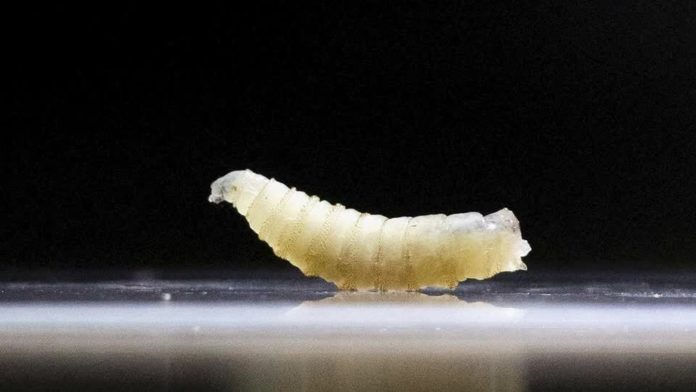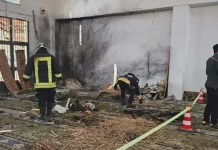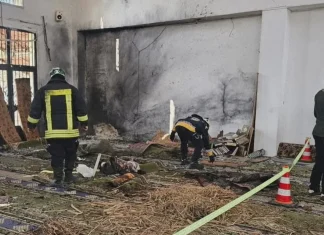A New Threat in American Pastures: The Return of the New World Screwworm
Imagine a tiny, seemingly insignificant parasite capable of wreaking havoc on livestock, wildlife, and even human health. This is not a science fiction horror but an unfolding reality in parts of the United States today. The New World screwworm, a flesh-eating parasite more at home in Central America’s tropical landscapes, has made a rare and unnerving appearance on U.S. soil—this time, in a human case linked to recent travel abroad.
On August 4, the U.S. Centers for Disease Control and Prevention (CDC) officially confirmed a historic first: a human case of travel-associated New World screwworm infestation was documented on American soil. The patient had recently traveled from El Salvador, a hotspot currently battling an outbreak of these voracious larvae. This news, verified through collaboration with the Maryland Department of Health, signals a wake-up call for health officials, livestock producers, and rural communities alike.
The Creepy Crawl of the Screwworm: What Are We Facing?
If you barely know what a screwworm is, you’re not alone. These parasitic flies, belonging to the family Calliphoridae, are the stuff of nightmares in agricultural circles. The female flies lay eggs in open wounds on warm-blooded animals—domestic cattle, wildlife, and occasionally humans. The hatched larvae, or maggots, burrow relentlessly into the flesh, feeding deeper and deeper. Their gruesome mode of destruction earned them their name: the feeding action resembles a screw turning into wood.
“The screwworm is one of the most destructive parasites we contend with,” says Dr. Elisa Martínez, a veterinary parasitologist based in Texas. “Without prompt treatment, the infestation can kill livestock, severely damage wildlife populations, and in rare cases, pose a mortal threat to humans.” The larvae’s appetite and the speed of tissue destruction make infestations especially alarming from both economic and health perspectives.
The Maryland Case: A Puzzle Wrapped in Secrecy
Details surrounding the confirmed human case in Maryland are frustratingly sparse, cloaked behind a veil of patient privacy and bureaucratic prudence. Industry sources have suggested the patient traveled from Guatemala, whereas official government statements cite El Salvador as the origin. This contradiction—seemingly trivial—matters profoundly to an industry already on edge due to screwworm’s northward march from Central America.
Beth Thompson, South Dakota’s state veterinarian, shared her experience with the unfolding situation: “We first heard of this case through informal channels. CDC has been… well, let’s say, not fully transparent. They deferred much of the communication back to state level, leaving us to piece together the facts ourselves.”
Such opacity unnerves ranchers and vets, sowing uncertainty in a moment when clarity could mean the difference between swift containment and widespread infestation.
The Economic Stakes: Counting the Cost of a Tiny Parasite
Texas stands on the frontlines of this battle. The state, a titan of U.S. beef production, harbors a sprawling cattle population vital to both the national economy and global food supply chains. According to estimates from the U.S. Department of Agriculture (USDA), a full-blown screwworm outbreak here could inflict damages nearing $1.8 billion. This figure encompasses not just the loss of livestock, but also the labor-intensive costs of treatment and the medicines required to curb outbreaks.
Brooke Rollins, the USDA Secretary, recently journeyed to Texas to herald an ambitious plan: the construction of a sterile fly facility. This state-of-the-art center aims to combat screwworm via a pioneering technique, first deployed successfully in the 1960s. It involves releasing millions of sterilized male screwworm flies into the wild to mate with females, ensuring no viable offspring hatch. This biological warfare against the parasite has been key to eradicating screwworms from the U.S. decades ago but must be ramped up again in light of new threats.
Farmers, Officials, and the Fog of Uncertainty
In the quiet towns dotting the American cattle belts—from Maryland’s rolling farmlands to the sprawling ranches of Texas and South Dakota—there is a rising hum of anxiety. The Beef Alliance, an industry group closely monitoring the situation, has circulated internal communications alerting livestock stakeholders of the human case. Yet, many local officials and farmers have found themselves chasing fragments of information.
An anonymous beef industry insider confided, “We’re on edge. Every screwdriver turn of those larvae in an animal could mean financial disaster for a family farm. The lack of clear communication makes it a nerve-racking scenario. Yet, we’re braced to act, hoping early intervention can stop screwworm before it wins a foothold.”
To curb potential spread, measures such as border closures to Mexican cattle imports have been implemented since November last year. Texas A&M University economists have been called upon to quantify the economic impact of these restrictions—further underscoring how deeply intertwined trade, agriculture, and biosecurity have become in today’s globalized markets.
The Bigger Picture: What Screwworms Teach Us About Global Health and Biosecurity
Why does this matter beyond the borders of the United States? Because the screwworm is more than a pest; it’s a symbol of how interconnected our world is—and how that connection brings both opportunities and vulnerabilities.
In a world where human movement stretches from one continent to another in mere hours, zoonotic diseases and parasites hitch rides with unsuspecting travelers or traded goods. This incident compels us to examine the porous borders of biosecurity, the pace of global trade, and agricultural practices across nations.
It also raises poignant questions: How prepared are we to face old threats resurrected by new realities? What investments are needed to safeguard food security—not just in isolated nations but across the globe? How do we balance trade and openness with cautious vigilance?
Looking Ahead: Vigilance and Hope
The New World screwworm may be small, but its shadow looms large over American agriculture and public health. Thanks to decades of scientific innovation—especially the sterile insect technique—the United States once banished screwworms from its landscapes. Now, as this ancient nemesis resurfaces, experts and farmers are rallying with renewed determination.
“This isn’t the time for panic, but it is a time for action,” urges Dr. Martínez. “We have the tools and know-how to handle this if we deploy them quickly and with transparency.”
For readers thousands of miles away, this story serves as a vivid reminder: The health of our ecosystems, economies, and communities is fragile and globalized. The screwworm’s stealthy return invites us to listen more closely, collaborate more openly, and defend the intricate web that sustains us all.
So next time you savor a perfectly grilled steak, or witness the quiet work of farmers in rural fields, spare a thought for the invisible battles waged beneath the surface—and for the humble, dreadful screwworm whose fate might be tangled with ours.










